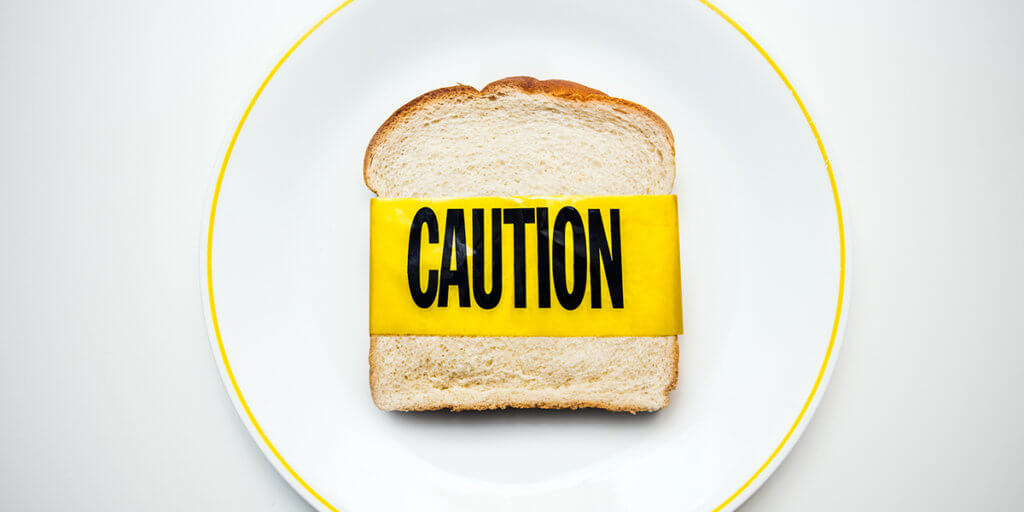
Food allergies are very common – about 32 million Americans have at least one food allergy and about 5.6 million of that number are children with food allergies. Food allergies are serious and still widely misunderstood, despite the large numbers of people who have them.
What is a Food Allergy?
A food allergy is when your body’s immune system negatively reacts to a protein in food which are generally harmless for most people. It reacts by rejecting the food, which can be serious and even life-threatening. This is why food allergies need to be taken seriously. Allergies may occur in response to any food and people may have more than one. They can also develop at any stage of life. Family history appears to play a role in the likelihood of someone developing a food allergy and if you have other allergic reactions, such as eczema or hay fever, this can also increase your chances.
Most Common Food Allergies
Food allergies can occur with any food. However, the eight most common food allergies are:
- Cow’s milk – this allergy is more commonly seen in babies and young children, as most grow out of this allergy by three years of age. If your child is allergic to cow’s milk, the only treatment is to avoid any foods or drinks that contain milk, milk powder, cheese, butter, margarine, yogurt, cream, ice cream, etc.
- Eggs – this second most common allergy is also one commonly grown out of, with 68% of people not having it once reaching the age 16. Some people may only be allergic to the yolk or only the whites.
- Tree Nuts – this is an allergy to some of the nuts and seeds that come from trees, which can include brazil nuts, almonds, cashews, macadamia nuts, pistachios, pine nuts, walnuts, etc. An allergy to any of these can include all forms of the tree nuts, such as nut butters and oils.
- Peanuts – peanut allergies will affect 4-8% of children and 1-2% of adults. Studies have shown that introducing peanuts early on to your children may be protective and keep these numbers low. Around 15-22% of children with a peanut allergy will no longer have it as they grow into teenagers.
- Shellfish – a shellfish allergy is one where your body attacks proteins from the crustacean and mollusk families of fish (shellfish). Shellfish includes shrimp, prawns, crayfish, lobster, squid, scallops, etc. If you have a shellfish allergy, excluding it from your diet might not be enough. For some, even the vapors from cooking shellfish can trigger an allergic reaction.
- Wheat – this allergy tends to affect children the most, though they will often outgrow it by age 10. A wheat allergy is not to be confused with celiac disease and non-celiac gluten sensitivity, which extend to any grains with gluten. Wheat allergies are purely allergic reactions to wheat.
- Soy – this allergy is more commonly seen in infants and children under three. It affects around 0.4% and around 70% will outgrow the allergy. The soy allergy comes from the protein found in soybeans or soybean containing products, like soy milk or soy sauce.
- Fish – fish allergies affect around 2% of adults and unlike other allergies, it common for a fish allergy to pop up later in life. Around 40% of adults will develop the allergy. Fish allergies are also not the same as shellfish. Those with a shellfish allergy might not be allergic to fish, but those with a fish allergy may be allergic to more than one kind.
Other less common food allergies include linseed, sesame seed, peach, banana, avocado, kiwi fruit, passion fruit, celery, garlic, mustard seeds, aniseed, and chamomile. As with all food allergies, the best way to protect yourself from one of these allergies is to avoid them to the best of your ability. Make sure to read labels on food and talk with your doctor about how to best avoid your specific food allergies.
Symptoms of an Allergic Reaction
There are currently no known cures for allergic reactions. An allergic reaction can range from mild to severe. An example of a severe reaction is a potentially life-threatening condition called anaphylaxis, which can affect several areas of the body.
Mild: Hives (itchy, red areas on the skin), eczema flare (dry, itchy rash), redness of the skin (particularly around the mouth or eyes), itchy mouth or ear canal, nausea or vomiting, diarrhea, stomach pain, nasal congestion or a runny nose, sneezing, a slight dry cough, odd taste in mouth.
Severe: swelling of the lips, tongue, and/or throat that blocks breathing, trouble swallowing, shortness of breath or wheezing, turning blue, drop in blood pressure (feeling faint, confused, weak, passing out), loss of consciousness, chest pain, a weak or “thready” pulse, sense of “impending doom”.
If you are experiencing any symptoms of an allergic reaction, whether mild or severe or a combination of any, get help immediately.
Talk with your primary care physician if you are concerned about any food allergies you or your child might have. Your doctor will be able to either test you for an allergy or direct you to an allergen specialist. Your doctor can also help you try elimination diets. If you are in need of a primary care physician, our Concierge Care Coordinator would be more than happy to discuss the best options for you. Call (518) 782-3800 today.
Sources:
https://www.foodallergyawareness.org/education/food-allergy-awareness-initiatives/food-allergy-awareness-week-month/
https://www.kidswithfoodallergies.org/page/food-allergy-awareness-week-month.aspx
https://www.healthline.com/nutrition/common-food-allergies#section9
https://www.foodallergy.org/life-with-food-allergies/food-allergy-101/what-is-a-food-allergy
https://www.foodallergy.org/life-with-food-allergies/food-allergy-101/symptoms-of-an-allergic-reaction-to-food
https://www.foodallergy.org/life-with-food-allergies/food-allergy-101/facts-and-statistics
